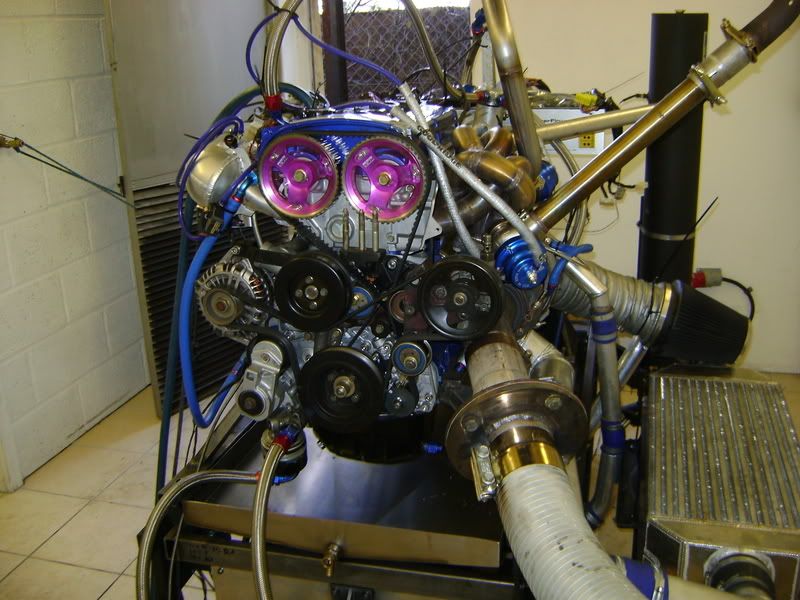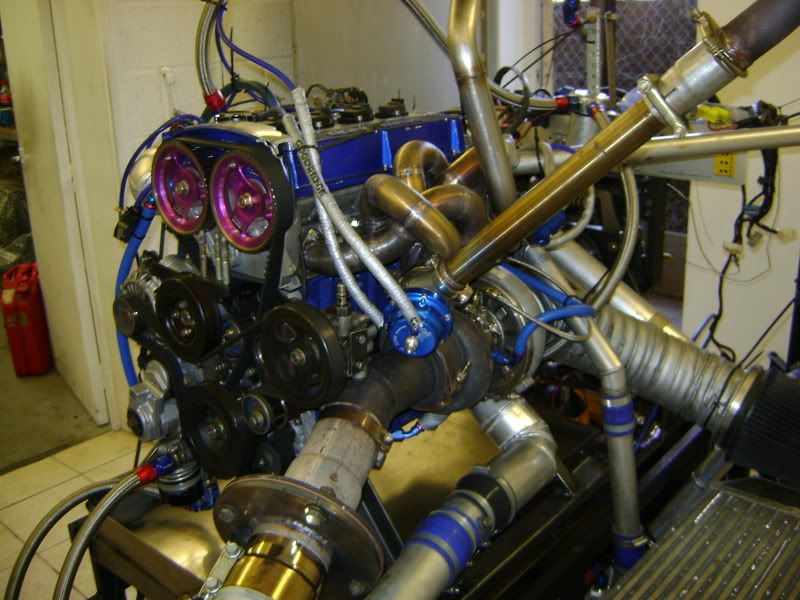Norris Designs - 830 ft/lb @ 5700 RPM (Shearer Manifold)
#31
Here is an example of a customer car done about a year ago.
Both graphs on VP Import, car is a GT35R 2.2 litre.
Norris Engine Dyno:

And then on a Dyno Dynamics in Shoot44 mode:

Bit hard to say how well they match. I'd say pretty well?
Full thread here: http://www.lancerregister.com/showthread.php?t=140934
Both graphs on VP Import, car is a GT35R 2.2 litre.
Norris Engine Dyno:
And then on a Dyno Dynamics in Shoot44 mode:
Bit hard to say how well they match. I'd say pretty well?
Full thread here: http://www.lancerregister.com/showthread.php?t=140934
#32
Evolved Member
iTrader: (23)
Join Date: Jun 2004
Location: Wisconsin
Posts: 1,503
Likes: 0
Received 0 Likes
on
0 Posts
Here is an example of a customer car done about a year ago.
Both graphs on VP Import, car is a GT35R 2.2 litre.
Bit hard to say how well they match. I'd say pretty well?
Full thread here: http://www.lancerregister.com/showthread.php?t=140934
Both graphs on VP Import, car is a GT35R 2.2 litre.
Bit hard to say how well they match. I'd say pretty well?
Full thread here: http://www.lancerregister.com/showthread.php?t=140934
-Paul
#33
And technically peak torque from the sheets I posted above is at 5200 rpm for both graphs as far as I can tell.
#34
Evolved Member
iTrader: (30)
Sorry my friend look again closer.
The engine dyno hits boost sooner but doesnt hit peak torque till almost crossover at 5200. The chassis dyno shows it halfway between 4.8k and 5.6k so that would be 5200 as well. The DD actually hits peak torque faster, though it sacrifices how much torque is before that I will admit.
#36
Evolved Member
iTrader: (38)
You say making full boost on a 42R around 5K is "Nothing overly impressive". Are you kidding? If that's nomal please point me to the dyno graphs. That is exceptionally impressive!
EVOlutionary
#37
I'm not saying that an engine dyno graph is going to look identical to the chassis dyno, but I'm just showing from the example above it appears to be pretty close. I also doubt Norris, given his reputation, would run his very expensive engine dyno in a way that the engine behaved very differently than it would on the road.
#38
Evolved Member
iTrader: (23)
Join Date: Jun 2004
Location: Wisconsin
Posts: 1,503
Likes: 0
Received 0 Likes
on
0 Posts
I should have worded my post differently. When I said peak torque, what I really meant was where the torque begins to level off. Looking at the engine dyno that setup is making 90% of peak torque by 4300 RPM whereas on the chassis dyno it doesn't get there until close to 5000 RPM. The peak happens at the same point but the curve leading up to the peak is much better on the engine dyno. If the same happens with the original dyno then the area before peak torque would not be nearly as impressive.
-Paul
-Paul
#39
Evolved Member
iTrader: (5)
Join Date: Dec 2003
Location: Work - New York, Alaska, Mexico or the Caribbean. -Home - Tx Hill Country
Posts: 1,858
Likes: 0
Received 0 Likes
on
0 Posts
I'm not saying that an engine dyno graph is going to look identical to the chassis dyno, but I'm just showing from the example above it appears to be pretty close. I also doubt Norris, given his reputation, would run his very expensive engine dyno in a way that the engine behaved very differently than it would on the road.
The 42R graph shows 250 lb ft of torque at 3600 rpm and I've never seen a 35R make that, much less something bigger. Assuming 20% loss as on the 35R graphs from the engine dyno to the DD, though I think that's a little high, that means the engine dyno shows a 42 spooling the same as a much smaller 35R. I would bet it's similar to the 35R graphs and that it would hit 250 lb ft 1000 rpm later on the DD. What's interesting is both dynos seems to reach peak boost within 300 to 400 rpm of each other based on the 35R graphs, but the ramp up happens much later and much quicker on the DD. From my personal experience on the road logging my 35R, the DD is much closer to what my turbo spools like than the engine dyno.
#40
Evolved Member
iTrader: (23)
Join Date: Jun 2004
Location: Wisconsin
Posts: 1,503
Likes: 0
Received 0 Likes
on
0 Posts
Are you blind? Peak torque on the chassis dyno is at 5200 rpm. Peak torque on the engine dyno is at 5300 rpm.
You say making full boost on a 42R around 5K is "Nothing overly impressive". Are you kidding? If that's nomal please point me to the dyno graphs. That is exceptionally impressive!
EVOlutionary
You say making full boost on a 42R around 5K is "Nothing overly impressive". Are you kidding? If that's nomal please point me to the dyno graphs. That is exceptionally impressive!
EVOlutionary
Full boost with a 42R on a 2.37L engine around 5k is very good, but not Earth shattering. The engine dyno shows boost leveling off around 4200 RPM, which would be extremely impressive.
Peak torque may happen at the same point on both graphs, but the engine dyno shows significantly more power at all points left of peak torque. This makes the torque curve appear much broader than it is on the chassis dyno.
-Paul
#41
What was the water in temp to the absorber at 7000 RPM ? As anything over 100 degrees the absorber will not hold a load and slip this will throw false numbers and would explain the jump in HP, TQ and Boost. Just a question, not pointing fingers as I respect Mr. Norris highly.
#44
Former Sponsor
iTrader: (41)
Join Date: Sep 2007
Location: Nitro Alley, IN
Posts: 2,113
Likes: 0
Received 0 Likes
on
0 Posts
Enzo, Do you think it is possible when the absorber slips it lets the engine free spool for a moment and that is why the boost jumped and it made power in 300 RPM ? I know on high torque n/a applications I have seen a slip and the engine lost power but with the turbo what do you think. It almost looks like a slip and catch. I like the overall result in either case. crcrain could you ask Mr. Norris what he thinks happened and if he made another run after this one with the same result. Thank you, just wondering what happened and if it was it a 500 RPM step test.

Last edited by Indy Evo; Apr 13, 2008 at 05:41 PM.
#45
Evolved Member
iTrader: (15)
Join Date: Jan 2004
Location: "Tri-Cities" WA
Posts: 1,493
Likes: 0
Received 0 Likes
on
0 Posts
When i had my 2.4 with a 72mm turbo (little smaller then the 42R) I was getting full boost around 5500rpms. The setup was far from being dialed in perfectly and we were running a really small exhaust housing to get those numbers just FYI.
Chris
Chris






